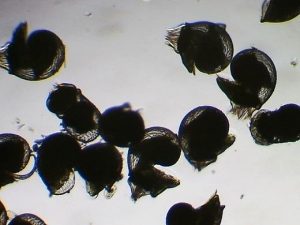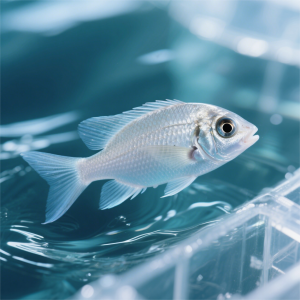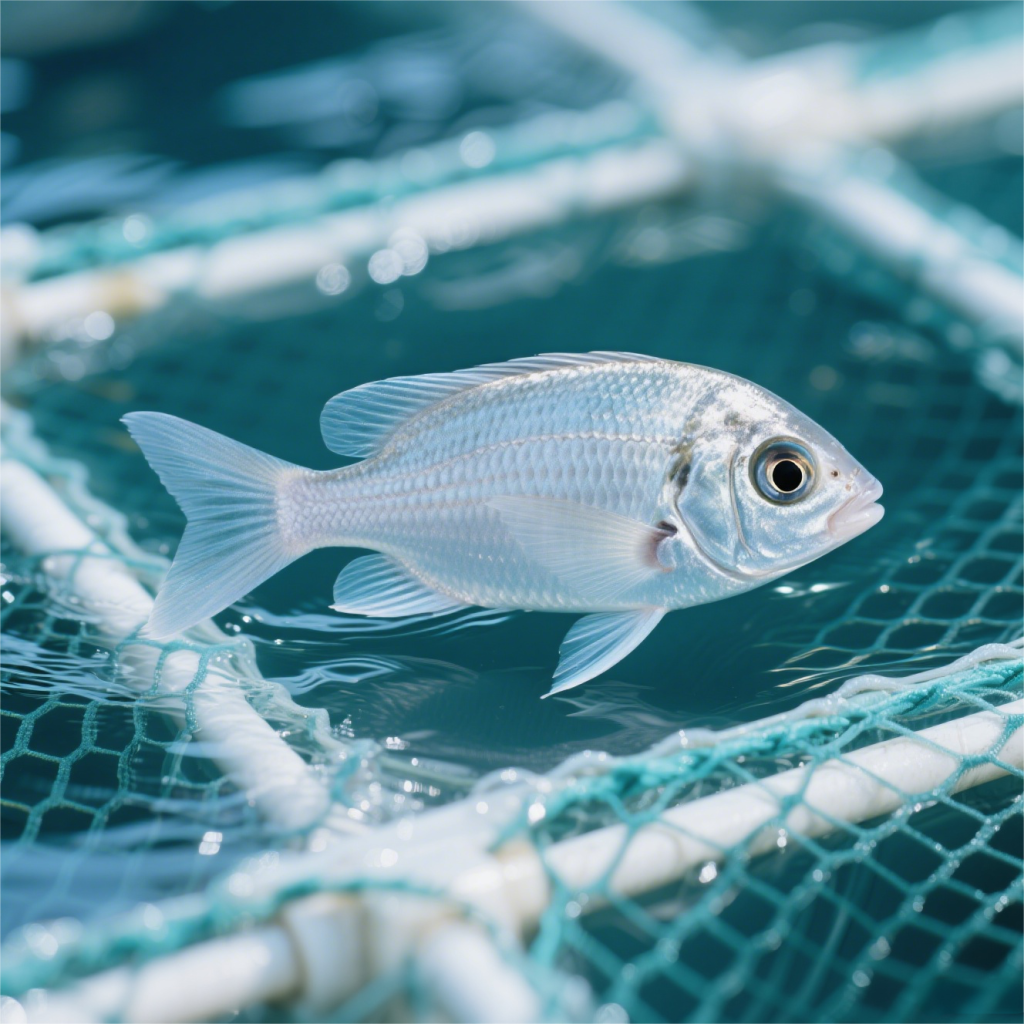The following is the detailed information on the seedling breeding and cultivation technology of Gilthead bream (Sparus aurata):

- Parent Fish breeding 1:
- Cultivation tank: Round glass steel tank can be used as the parent fish cultivation tank, each pool is about 20 cubic meters, such as Tianjin Nuen Aquatic Technology Development Co., Ltd. parent fish cultivation workshop, the use of this specification of the cultivation tank.
- Water quality: Natural seawater needs to be treated by primary precipitation, secondary precipitation, sand filtration, high-pressure filtration and protein separator, and adjust temperature and salt to meet NY-5052 “Standard for Pollution-free Food Mariculture Water”. During the incubation period, the water temperature was maintained at 12-30℃, and the water temperature before spawning was 17-18℃, and the natural light was 500lx.
- Food and feeding: mainly mixed fish, the feeding amount accounts for 2%-4% of the body mass of parent fish. Before spawning, in order to strengthen the nutrition of the parent fish, fresh razor clam or chilled food can be fed, and complex vitamins, squid, mixed shrimp, etc. can be added to the food to ensure the quality of fertilized eggs.
- Daily management: Breeding density 4-5 tail/cubic meter, water change twice a day, 200% water change, and regularly brush the pool, clean the bottom, maintain good water quality and environment.
- Artificial seedling 1:
- Spawning and fertilization: The gonads of golden head bream mature in autumn and winter under artificial breeding conditions, and belong to the type of short light cycle spawning, and mature in batches and spawn multiple times. Change the water for the parent fish at 8:00 every day, and through the current stimulation, the parent fish will begin to have obvious chasing behavior, obvious marriage color, and naturally spawn and fertilize in the water.
- Collection and incubation of fertilized eggs: the fertilized eggs at the peak of the spawning period are picked out with a hand net or a small drawing net made of 80 mesh sieve silk. After washing with seawater, floating eggs are selected for incubation. Incubation density 3.0×10⁴-10.0×10⁴/ cubic meter, water temperature 18-19℃, salinity 30, weakly aerated, still water incubation, adding 20cm of water every day.
- Seedling Cultivation 1:
- Water quality management: seedling water temperature 19-23℃, salinity 28-32, pH 8-8.4, light 1000lx. The water of larvae was changed once a day, and the amount of water changed was 20%-60%. Larvae at 10 days of age began to suck, once / 2 days. Water change twice a day as young fish, 60% to 100% of the water change, once a day suction; The young fish change the water 3 times/day, the water change rate is 100%-300%, the pollution is sucked and the bottom of the pool is cleaned every day, and the water quality is maintained.
- Feed: Feed chlorella, pleated brachiocephalus, halogenated larva, pellet feed, minced fish, etc. Larvae were fed chlorella at a feeding density of 3.0×10⁵-5.0×10⁵cell/ml until 20 days after feeding. Rotifers were fed 1-2 times a day at a feeding density of 10-50 /ml, and halogenated larva were fed 2 times a day at a feeding density of 30-50 /ml. Before feeding rotifers and halogenated larvae, nutritional fortificators and chlorella should be used for nutritional enhancement. Compound feed can choose the right series of products, feed less, feed often. The minced fish is crushed and mixed with frozen wild fish, powdered material, Vc, etc., and fed 2-3 times a day.
- Disease prevention and control: prevention is the main thing. The feed and minced fish are easy to pollute the water quality, which can be solved by regular suction and water change and timely removal of the oil film on the surface of the water. In addition, probiotics should be injected into the breeding tank regularly to maintain good water quality, and antibiotics should not be used during the breeding period.
- Breeding management:
- Breeding environment: Choose a place with sufficient sunlight, good ventilation and clear water as a breeding site. If you use aquarium culture, you need to use glass or plastic aquariums, install filters, oxygenation equipment and heating equipment, keep the water quality clean, sufficient oxygen and appropriate water temperature, you can also arrange water plants and decorations to create a good growing environment.
- Feeding density: reasonable control of feeding density to avoid excessive density affecting the growth and health of fish. For example, in pond culture, the number of stocking should be determined according to factors such as pond size and water quality conditions.

- Feed feeding: Golden head snapper is omnivorous fish, you can choose special golden head snapper feed, you can also feed shrimp skin, small fish and other natural ingredients. Adult fish are fed 2-3 times a day, each feeding amount is about 1%-5% of the fish’s body weight, and be careful not to overfeed to prevent the deterioration of water quality.
- Daily observation: Pay close attention to the activity status and feeding situation of the golden head snapper. If the fish is found to have abnormal scales, white spots and other symptoms, or abnormal behavior, timely measures should be taken to deal with it, such as checking the water quality, diagnosing diseases and carrying out corresponding treatment.
